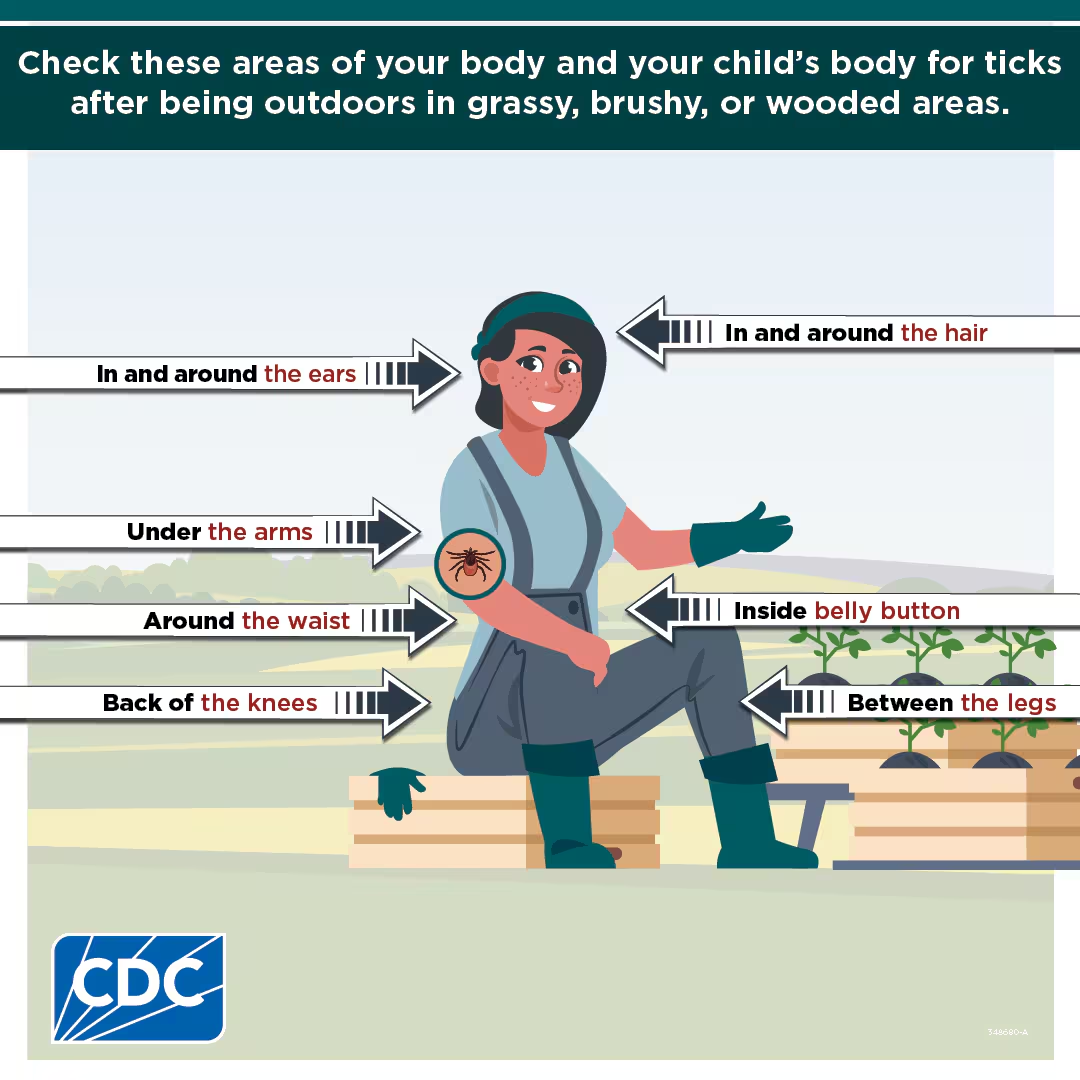Ticks
Information on tick-borne diseases, testing,
and prevention strategies.
Why are ticks dangerous?
Ticks can be dangerous because they are often carriers of pathogens that can cause diseases. When a tick bites and feeds on a human or animal host, it can transmit bacteria, viruses, or even parasites into the bloodstream. Some of the diseases transmitted by ticks include Lyme disease, Powassan virus, babesiosis, anaplasmosis, and tick-borne encephalitis.
Lyme disease is the most common vector-borne disease in the United States. It is caused by the bacterium Borrelia burgodeferi and can lead to a range of symptoms, including fever, fatigue, headache, muscle and joint aches, and swollen lymph nodes. If left untreated, Lyme disease can cause serious complications affecting the heart, nervous system, and joints. It is considered a significant health concern due to its potential long-term impact on individuals’ well-being and quality of life.
Tick Testing Through NDDH
We are happy to announce that NDDH is now submitting ticks for identification and testing of Lyme disease, babesiosis, and anaplasmosis. Ticks are sent to The Connecticut Agriculture Experiment Station (CAES). If you would like to read more about tick testing through the CAES, you can visit their website here.
To get started, fill out the form below and bring the tick you would like tested to our office at 69 S Main Street, Brooklyn CT, 06234. Please also bring $8 in cash to cover shipping costs.
Preparing the tick for testing:
- Do not place the tick on tape.
- Ticks should be placed in a crush-proof container, but if one is not available a sealed plastic bag will suffice. NDDH will have padded envelopes available.
- Do not package the tick with any objects. This includes paper towels, cotton swabs, plant matter, bandages, or any other materials.
- Do not place the tick in any solution. This includes substances like water and alcohol. All ticks should be submitted dry.
How to Remove a Tick
Ticks should be removed as soon as they are found. In most cases, a Lyme infected tick must be attached for 36 – 48 hours before transmitting the disease. Thorough searches and prompt removal are essential for protecting yourself, children, and pets from tick-borne illnesses. Below are some tips for removing an embedded tick.
- Use fine-tipped tweezers to grasp the tick as close to the skin as you can.
- Pull upward with steady, even pressure. Don’t twist or jerk the tick.
- After removing the tick, clean the bite area and your hands with rubbing alcohol or soap and water.
- Dispose of the tick by flushing it down the toilet. If you would like to submit the tick for identification and testing, place the tick in a sealed bag or container. Do not place the tick on tape or in alcohol or water.

Tick Bite Prevention Strategies
Here are nine strategies for preventing Lyme and other tick-borne illnesses caused by tick bites:
- Walk in the middle of trails; avoid sitting on logs and leaning on trees.
- Wear a hat, tuck in hair, if possible.
- Wear a long-sleeved shirt fitted at the wrist.
- Wear shoes, no bare feet or sandals.
- Wear long pants tucked into high socks or duct tape around pants.
- Consider child appropriate repellents (here is a list of EPA registered insect repellents).
- Wear white or light-colored clothing to make it easier to see ticks.
- Do tick checks immediately and 3 days after outdoor activity.
- If you find a tick, remove it carefully and consider saving it for testing.

Be sure to check in the following locations on yourself and your children after spending time outdoors in grassy, brushy, or wooded areas:
- Under the arms
- In and around the ears
- Inside the belly button
- In and around the hair
- Between the legs
- Around the waist
For your pets, make sure you look:
- In and around the ears
- Around the eyelids
- Under the collar
- Around the tail
- Under the front legs
- Between the back legs
- Between the toes




